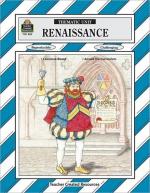|
This section contains 904 words (approx. 4 pages at 300 words per page) |

|
Different Patterns. In the contemporary world, families in urban areas and in most parts of the developed world rarely work as a unit; economically, families are units of consumption—buying items they use as a group such as cars, houses, and food—rather than units of production. They are also bound together by emotional ties, expected to develop love for one another and to engage in leisure-time activities together. This model is in many ways the reverse of the pattern in Renaissance and Reformation Europe; in that era, most families were units of production, raising crops or making items together. (In this way, they resemble families in less-developed areas in which most people still make their living by farming.) During what little free time they had, family members generally sought out their peers, rather than other family members, for...
|
This section contains 904 words (approx. 4 pages at 300 words per page) |

|




